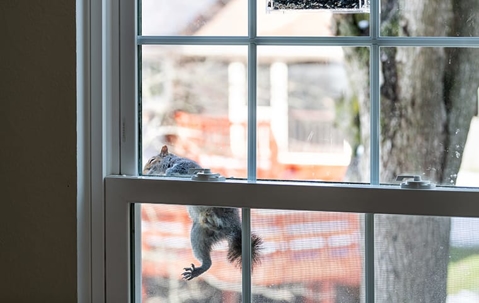Squirrels are fascinating creatures. Their bushy tails and acrobatic antics bring joy to many. However, if you live in San Antonio, you might be all too familiar with the challenges these little critters can bring to your property.
If you’re struggling with squirrels in San Antonio, we’ve got you covered, from where they live to health risks and prevention methods. We’ll also guide you on seeking professional squirrel removal in San Antonio when needed.
Where Do Squirrels Like To Live?
Before learning how to deal with squirrels, you should know their habitat preferences. Squirrels, both tree and ground-dwelling species, often seek out cozy spots in trees for nesting.
In urban areas like San Antonio, squirrels can also find refuge in attics, crawl spaces, and chimneys. These spots provide warmth and safety, making them ideal for building nests and raising their young. Knowing their preferred locations is the first step in managing squirrel control issues effectively.
Health Risks Associated With Ground Squirrels: What You Need To Know
While squirrels might seem harmless, they can pose health risks, especially when they infiltrate your living spaces. Ground squirrels, in particular, can carry diseases and parasites like ticks and fleas. These critters can transmit diseases, such as leptospirosis and salmonellosis, endangering the health of your family and pets.
Contact with squirrel feces can pass on such diseases. To remove feces safely, wear gloves and a mask, dampen the area with a disinfectant or a mixture of bleach and water, carefully remove the droppings, and dispose of them in a sealed bag. Thoroughly clean and disinfect the affected area to minimize the risk of disease transmission. Controlling squirrels can help you avoid this situation.
How Can I Prevent Squirrels Around My Home And Yard?
Given the potential risks they bring, you’d naturally prefer that squirrels stick with tree jumping than invade your property. Here are a few ways to prevent squirrels from turning your home and yard into their personal playground:
- Conduct a thorough inspection of your home, sealing potential entry points like gaps in the roof, walls, or foundation. Remember, squirrels can squeeze through surprisingly small openings, so be meticulous in your efforts.
- Squirrels are excellent jumpers. Trim tree branches that overhang your home, preventing easy access to your attic or roof.
- Squirrels are opportunistic feeders. Secure your trash bins with tight-fitting lids to prevent them from scavenging for food in your garbage.
- If you enjoy feeding birds, invest in squirrel-proof bird feeders. These specialized feeders can prevent squirrels from accessing the bird food and discourage them from frequenting your yard.
- Consider using natural repellents like pepper spray or predator urine around your property. These scents are unpleasant for squirrels and can deter them from coming too close.
Dealing with squirrels in San Antonio might be a common challenge, but with the right knowledge and strategies, you can effectively manage tree squirrel control and keep these persistent little creatures away.
The Best Way To Keep Squirrels And Other Wildlife Away
While prevention methods are effective, sometimes squirrels can be persistent. In such cases, you should consider more advanced solutions to keep them and other wildlife away.
Enlisting the help of squirrel removal services can provide tailored solutions for your specific situation. Pest control experts have the expertise to handle squirrel infestations effectively, ensuring your home remains critter-free.
Remember, while these methods are effective, persistence and consistency are key. Coexistence is the goal, and pest control professionals can humanely remove squirrels.
Founded in 1990, our expert team at Accurate Pest Control has proven experience in the industry to effectively and ethically handle your squirrel problem. Contact us today to schedule an inspection.

